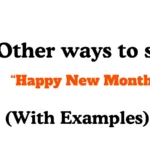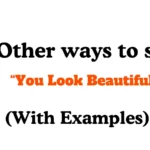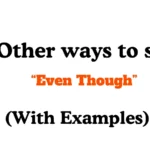Sometimes, expressing indifference or neutrality in a professional setting requires careful wording. Whether you’re addressing a colleague, client, or manager, it’s essential to choose phrases that convey your message without sounding dismissive or uninterested.
With the right alternatives, you can express your feelings while maintaining respect, empathy, and professionalism. Below are 30 other ways to say “I don’t care” that help keep your communication thoughtful, warm, and engaging.
Is It Professional/Polite to Say “I Don’t Care”?
While saying “I don’t care” may feel direct, it can come across as harsh or dismissive, especially in professional settings. It’s important to be mindful of your tone and the context in which you’re expressing your feelings. Using alternative phrases can soften your message and make it more professional, empathetic, and polite.
Pros and Cons of Saying “I Don’t Care”
Pros:
- Straightforward: It clearly communicates a lack of preference or concern.
- Quick: It’s a simple phrase to use in casual conversations.
Cons:
- Dismissive: It can come across as uninterested or uncaring.
- Unprofessional: It may not always be suitable for formal or professional settings.
- Insensitive: It might inadvertently offend others, especially in situations where empathy is needed.
Synonyms For I Don’t Care
- I’m Open to Suggestions
- I’m Happy Either Way
- That Works for Me
- I’m Flexible
- I Have No Strong Opinion
- It’s Up to You
- I’m Okay With Whatever
- I’m Fine With Either Option
- Do What You Think is Best
- I Have No Preference
- It Doesn’t Matter to Me
- Whatever You Prefer
- I’m Good With Any Option
- Feel Free to Decide
- I’m Fine Either Way
- Whatever You Choose
- I Have No Issue With That
- I’m Open to Any Ideas
- It’s All the Same to Me
- I Trust Your Judgment
- I’m Indifferent
- I’m Easygoing
- Go Ahead, I’m Fine
- I Don’t Mind
- I’m Neutral
- I’m Not Particular
- You Decide
- I’m Okay with Anything
- It’s Your Call
- I’m Not Fussed
1. “I’m Open to Suggestions”
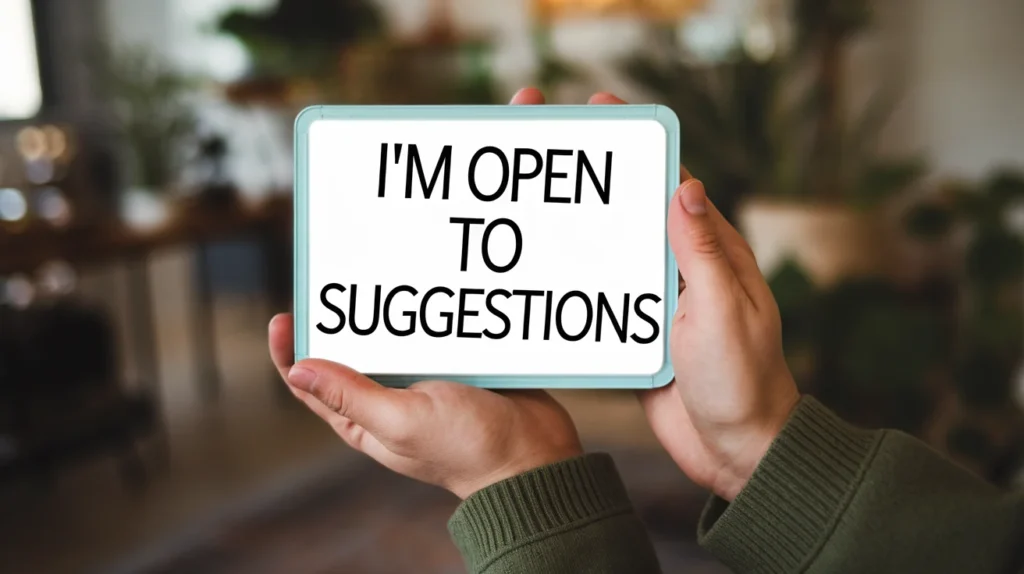
Scenario: You’re discussing ideas for a project, and you don’t have a strong preference on which direction to take.
Examples:
- “I’m open to suggestions for the project’s theme.”
- “Feel free to suggest what works best for you, I’m open to suggestions.”
- “I’m open to suggestions, so let me know your thoughts.”
Tone: Collaborative, flexible
Explanation: This phrase expresses your openness to others’ ideas without showing disinterest, fostering a cooperative and positive atmosphere.
2. “I’m Happy Either Way”
Scenario: A colleague is asking for your input on a decision, but you’re neutral about the outcome.
Examples:
- “I’m happy either way; whichever option you choose works for me.”
- “I’m happy either way, just let me know what you decide.”
- “You can go ahead, I’m happy either way.”
Tone: Supportive, agreeable
Explanation: This phrase conveys that you trust the other person’s judgment, and you’re easy going without being indifferent.
3. “That Works for Me”
Scenario: You’re agreeing to a proposed plan or arrangement without strong feelings about it.
Examples:
- “That works for me, let’s move forward.”
- “I think that works for me; it sounds good.”
- “That works for me if that’s what you prefer.”
Tone: Neutral, cooperative
Explanation: This shows agreement without enthusiasm, making it a polite way of expressing neutrality.
4. “I’m Flexible”
Scenario: You’re in a meeting discussing various potential approaches, and you have no strong preference.
Examples:
- “I’m flexible on this, so whatever works best.”
- “Feel free to choose, I’m flexible with the options.”
- “I’m flexible—let’s go with whatever you think is best.”
Tone: Open, accommodating
Explanation: This expresses adaptability, suggesting you are open to whatever the decision-maker prefers without pushing for a specific outcome.
5. “I Have No Strong Opinion”
Scenario: Someone asks you about a decision, and you genuinely have no preference.
Examples:
- “I have no strong opinion on this; I’m happy to go with the flow.”
- “I don’t have a strong opinion, so I trust your judgment.”
- “I have no strong opinion, so whatever you decide is fine by me.”
Tone: Neutral, honest
Explanation: This phrase shows that you’re being transparent about not having a preference, offering room for others to take the lead.
6. “It’s Up to You”
Scenario: A colleague or team member asks for your input on a decision, and you have no particular preference.
Examples:
- “It’s up to you; whatever you think is best.”
- “I’m fine with whatever you decide—it’s up to you.”
- “It’s up to you, I trust your judgment.”
Tone: Empowering, respectful
Explanation: This phrase shifts the decision-making to the other person in a positive, trusting way, without showing indifference.
7. “I’m Okay With Whatever”
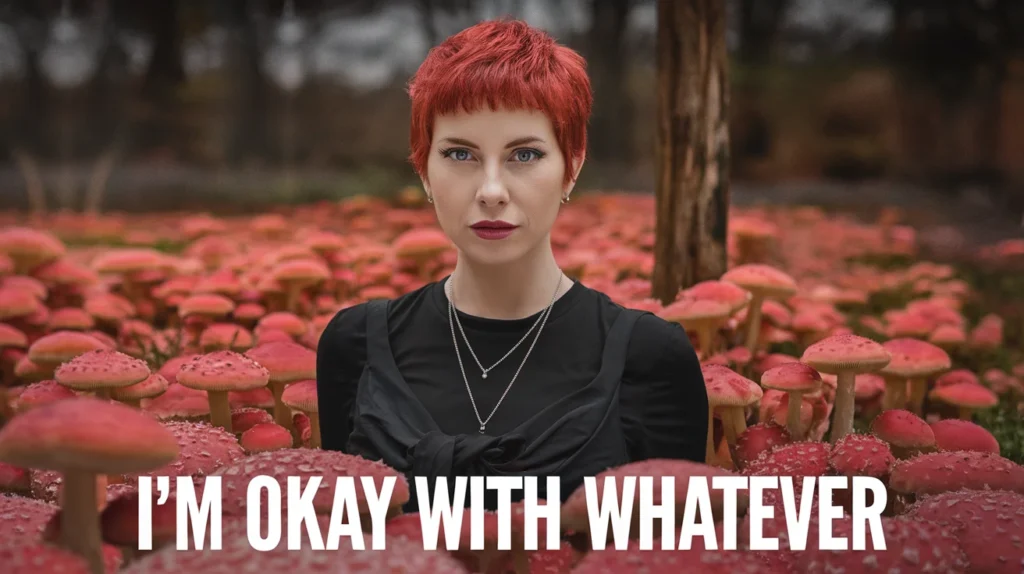
Scenario: Someone asks whether you have a preference, and you’re indifferent to the options.
Examples:
- “I’m okay with whatever you think works best.”
- “I’m okay with whatever you decide for the team.”
- “I’m okay with whatever the final choice is.”
Tone: Comfortable, open
Explanation: It conveys that you are content regardless of the choice, showing flexibility and willingness to support others.
8. “I’m Fine With Either Option”
Scenario: You’re discussing two potential solutions and have no preference for one over the other.
Examples:
- “I’m fine with either option; both seem good to me.”
- “Either option works for me, I’m fine with both.”
- “I’m fine with either option, just let me know what you decide.”
Tone: Approving, agreeable
Explanation: This phrase conveys that you don’t have a preference, but are open to either choice without hesitation.
9. “Do What You Think is Best”
Scenario: Someone is seeking your opinion, but you trust their judgment and don’t need to weigh in heavily.
Examples:
- “Do what you think is best, I trust your expertise.”
- “I’m comfortable with whatever, do what you think is best.”
- “Do what you think is best for the project; I’m on board.”
Tone: Trusting, collaborative
Explanation: This phrase places trust in the other person’s judgment, encouraging them to take the lead with your full support.
10. “I Have No Preference”
Scenario: You’re in a discussion about various choices but have no opinion on which is the best.
Examples:
- “I have no preference, I’ll go with whatever works.”
- “I have no preference in this matter, whatever you decide is fine.”
- “I have no preference, just let me know what you choose.”
Tone: Neutral, considerate
Explanation: This phrase communicates your lack of preference politely, allowing others to make the final decision.
Read More: 30 Other Ways to Say ‘I Appreciate It’ (With Examples)
11. “It Doesn’t Matter to Me”
Scenario: A colleague offers two options and asks for your preference, but you don’t mind either.
Examples:
- “It doesn’t matter to me which option you choose.”
- “It doesn’t matter to me, so feel free to decide.”
- “It doesn’t matter to me, I’m happy with whatever.”
Tone: Casual, flexible
Explanation: This phrase shows that you don’t have a strong opinion either way, giving the other person freedom to choose.
12. “Whatever You Prefer”
Scenario: You’re having a discussion and want to leave the decision-making to the other person.
Examples:
- “Whatever you prefer, I’m good with that.”
- “I’m happy to go with whatever you prefer.”
- “Whatever you prefer works for me.”
Tone: Supportive, respectful
Explanation: This alternative suggests that you value the other person’s input and are willing to go along with their preference.
13. “I’m Good With Any Option”
Scenario: A team is considering multiple alternatives, and you don’t mind which one is chosen.
Examples:
- “I’m good with any option, just let me know.”
- “I’m good with any option, all of them seem viable.”
- “I’m good with any option, I’m easygoing on this.”
Tone: Positive, open
Explanation: This phrase communicates an openness to all choices without strong attachment to any particular one.
14. “Feel Free to Decide”
Scenario: A colleague asks for your opinion on an issue, but you’re happy to let them take the lead.
Examples:
- “Feel free to decide; I trust your judgment.”
- “Feel free to decide; I’m fine with whatever.”
- “Feel free to decide on this, I’m not particular.”
Tone: Encouraging, trusting
Explanation: This conveys that you’re giving the other person the freedom to make the decision, showing respect for their input.
15. “I’m Fine Either Way”

Scenario: You’re in a situation where you have no strong preference about the direction to take.
Examples:
- “I’m fine either way, whichever works best for everyone.”
- “I’m fine either way, just let me know what you choose.”
- “I’m fine either way, so no need to worry about my opinion.”
Tone: Comfortable, relaxed
Explanation: This shows a sense of ease and acceptance, indicating that you’re not worried about the outcome.
16. “Whatever You Choose”
Scenario: A colleague asks for your input on two options, but you truly have no preference.
Examples:
- “Whatever you choose, I’ll support it.”
- “I trust your decision—whatever you choose is fine.”
- “Whatever you choose, I’m happy to go with that.”
Tone: Supportive, trusting
Explanation: This phrase reassures the other person that you are fine with their choice and that you respect their decision-making process.
17. “I Have No Issue With That”
Scenario: A teammate suggests an approach, and you have no objections.
Examples:
- “I have no issue with that; it sounds reasonable.”
- “I have no issue with that—go ahead.”
- “If that works for you, I have no issue with that.”
Tone: Neutral, accommodating
Explanation: This phrase reassures the other person that their choice is acceptable to you without sounding indifferent.
18. “I’m Open to Any Ideas”
Scenario: A brainstorming session is happening, and you’re happy to consider all options.
Examples:
- “I’m open to any ideas; let’s explore different possibilities.”
- “I don’t have a specific preference—I’m open to any ideas.”
- “I’m open to any ideas, so feel free to share your thoughts.”
Tone: Encouraging, inclusive
Explanation: This phrase keeps the conversation open, making others feel valued and included in decision-making.
19. “It’s All the Same to Me”
Scenario: Someone is asking you to choose between two nearly identical options.
Examples:
- “It’s all the same to me; I don’t see much difference.”
- “Honestly, it’s all the same to me—you can decide.”
- “It’s all the same to me; I’ll go with whatever works best.”
Tone: Casual, neutral
Explanation: This phrase shows that the decision doesn’t make a difference to you, but be mindful of tone to avoid sounding dismissive.
20. “I Trust Your Judgment”
Scenario: A colleague or leader is making a decision, and you fully support their choice.
Examples:
- “I trust your judgment—go with what you think is best.”
- “I don’t have a strong opinion, so I trust your judgment.”
- “I completely trust your judgment on this.”
Tone: Respectful, professional
Explanation: This phrase empowers the other person by showing confidence in their ability to decide wisely.
21. “I’m Indifferent”
Scenario: Someone asks your opinion, and you truly have no preference.
Examples:
- “I’m indifferent, so you can go ahead and choose.”
- “I’m indifferent; both options work fine for me.”
- “I’m indifferent, so whatever you decide is good.”
Tone: Honest, neutral
Explanation: This phrase expresses a lack of preference but should be used carefully, as it can sometimes sound detached.
22. “I’m Easygoing”
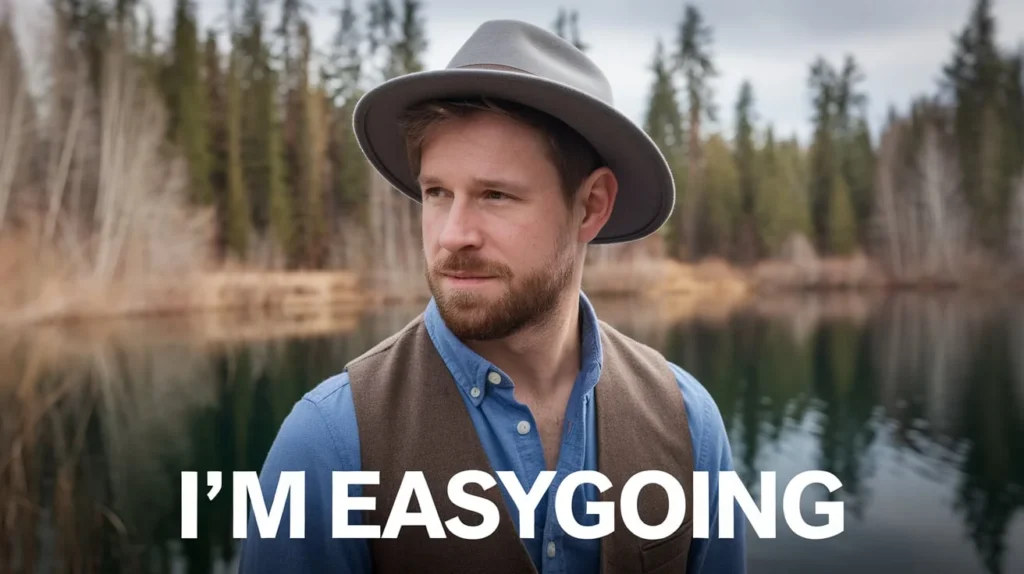
Scenario: You’re discussing options, and you want to express that you’re fine with any choice.
Examples:
- “I’m easygoing, so whatever works for everyone is fine.”
- “I’m easygoing about it—choose what’s best.”
- “I’m easygoing, so I’ll go with whatever’s decided.”
Tone: Relaxed, friendly
Explanation: This phrase conveys flexibility and openness while maintaining a warm tone.
23. “Go Ahead, I’m Fine”
Scenario: Someone asks for approval on a decision, and you have no objections.
Examples:
- “Go ahead, I’m fine with that.”
- “I have no issues—go ahead.”
- “If that’s the plan, go ahead, I’m fine with it.”
Tone: Permissive, supportive
Explanation: This phrase reassures the other person that they can move forward confidently.
24. “I Don’t Mind”
Scenario: A colleague asks whether you’re okay with a particular option.
Examples:
- “I don’t mind at all—whatever works for you.”
- “I don’t mind either way; both options are fine.”
- “I don’t mind, so let’s go with what’s easiest.”
Tone: Friendly, flexible
Explanation: This phrase expresses neutrality while still being considerate of others’ choices.
25. “I’m Neutral”
Scenario: A discussion is happening, and you genuinely don’t favor one option over another.
Examples:
- “I’m neutral on this, so I’ll let you decide.”
- “I’m neutral—it doesn’t make much difference to me.”
- “I’m neutral, so feel free to pick whichever works best.”
Tone: Objective, calm
Explanation: This phrase signals that you are not leaning toward any particular choice while maintaining professionalism.
26. “I’m Not Particular”
Scenario: Someone asks if you have a preference on a minor detail.
Examples:
- “I’m not particular—do whatever works best.”
- “I’m not particular, so I’ll go with the majority.”
- “I’m not particular—either option is fine with me.”
Tone: Casual, open
Explanation: This phrase shows flexibility and helps keep decision-making smooth.
27. “You Decide”
Scenario: A team member asks for your input, but you prefer them to make the final choice.
Examples:
- “You decide—I’m good with whatever you choose.”
- “I trust you on this—you decide.”
- “You decide, and I’ll support your choice.”
Tone: Trusting, encouraging
Explanation: This phrase empowers the other person by giving them the authority to make the decision.
28. “I’m Okay with Anything”
Scenario: You’re asked about a choice, and you have no preference.
Examples:
- “I’m okay with anything, so go ahead and pick.”
- “I’m okay with anything—just let me know what works best.”
- “I’m okay with anything that makes the most sense.”
Tone: Open, cooperative
Explanation: This phrase is a relaxed and accommodating way to express neutrality.
29. “It’s Your Call”
Scenario: Someone is looking to you for approval on a decision.
Examples:
- “It’s your call—I’m happy to go with what you think.”
- “It’s your call—I don’t have a strong preference.”
- “It’s your call, and I trust you to make the right decision.”
Tone: Trusting, professional
Explanation: This phrase encourages the other person to take responsibility for the decision, reinforcing their authority.
30. “I’m Not Fussed”
Scenario: A casual discussion is happening, and you want to express that you’re fine with any option.
Examples:
- “I’m not fussed—either option is fine.”
- “I’m not fussed; just let me know what you choose.”
- “I’m not fussed, honestly—it’s all good to me.”
Tone: Informal, relaxed
Explanation: This phrase is often used in casual settings to express a lack of preference in a lighthearted way.
Conclusion
When communicating in a professional setting, it’s important to express neutrality or indifference in a way that maintains respect and warmth. Using phrases like “I’m flexible” or “I trust your judgment” can keep your message open and inclusive while avoiding the impression of being dismissive. By choosing the right wording, you can foster positive interactions, encourage collaboration, and make others feel valued in the decision-making process.

Emma Rose is a dedicated writing expert with a passion for helping others enhance their communication skills. With a strong background in grammar, language structure, and style, Emma empowers individuals to write with clarity, confidence, and impact. Her approach combines a keen attention to detail with a supportive, personalized touch, ensuring each person she works with improves and grows in their writing journey.











